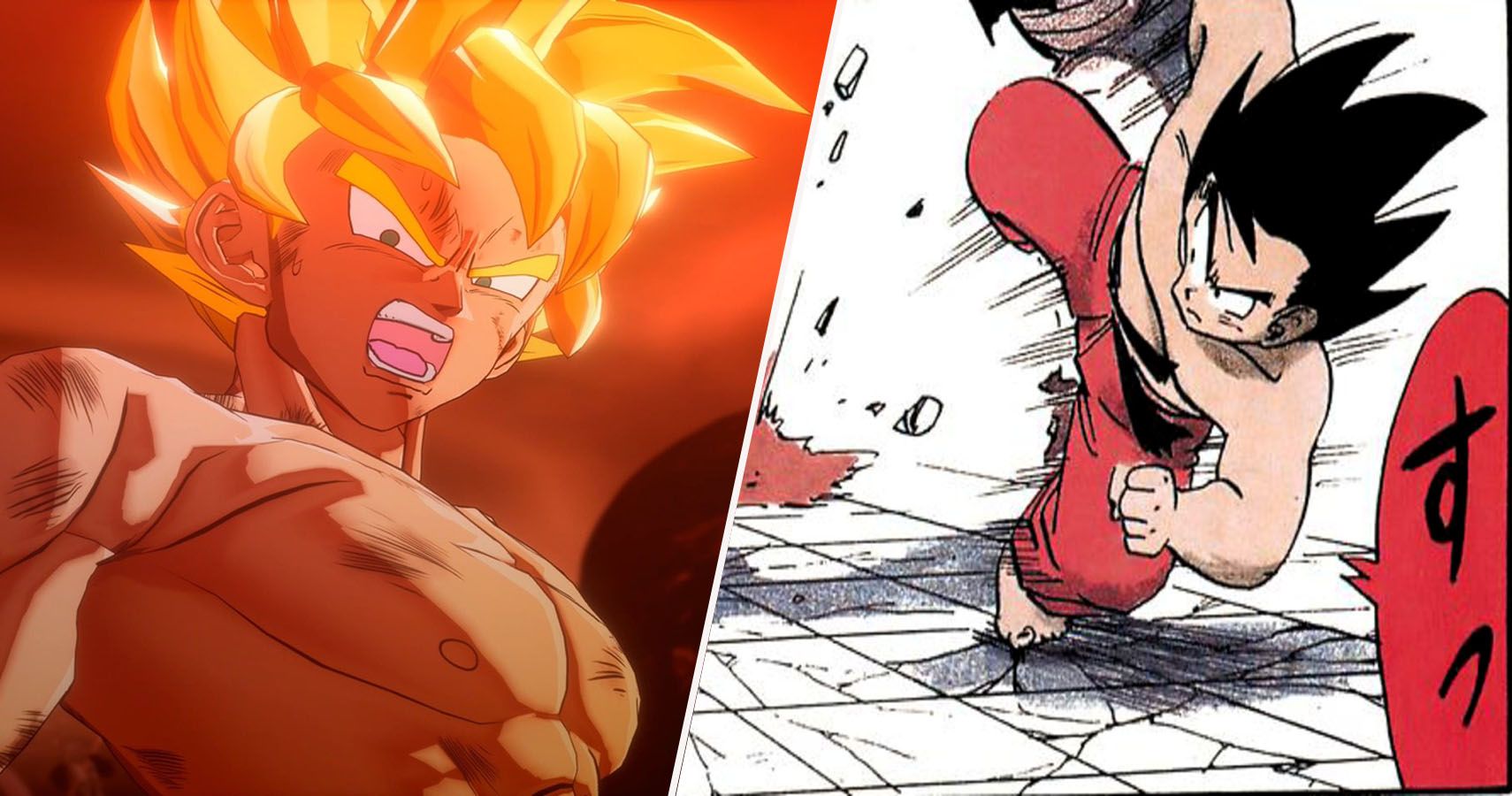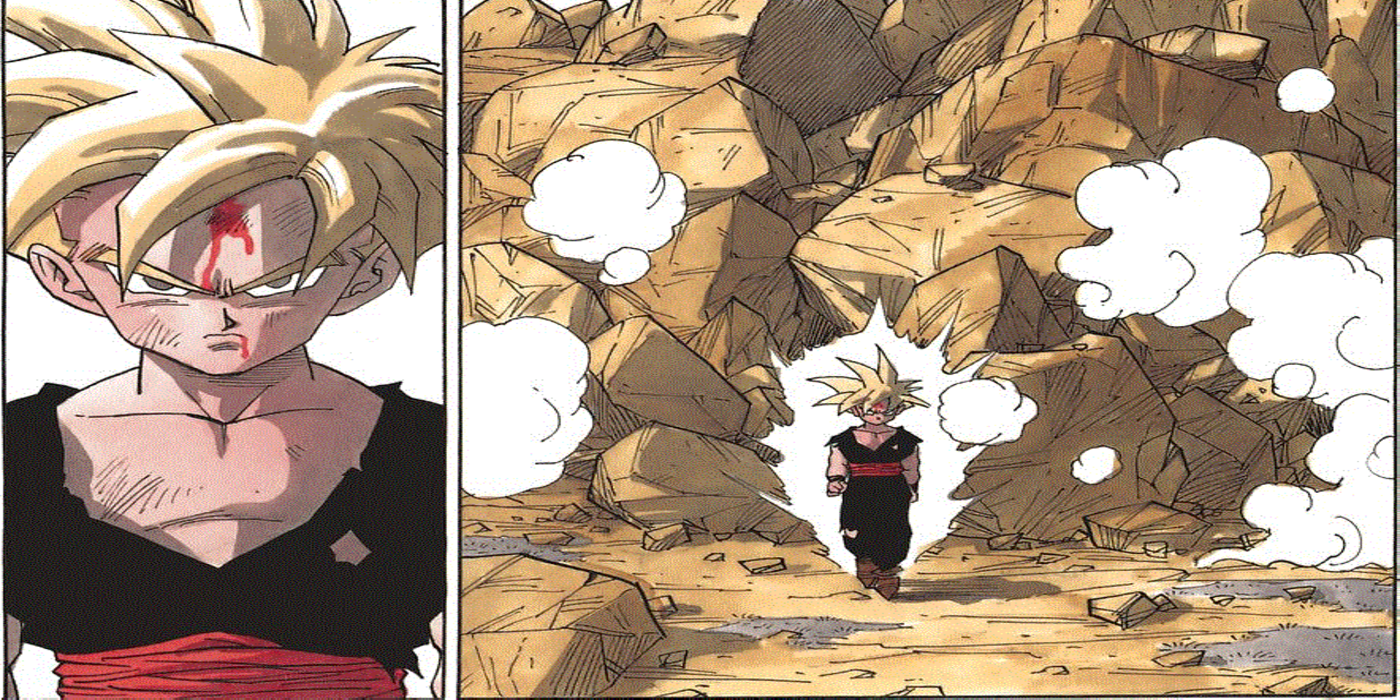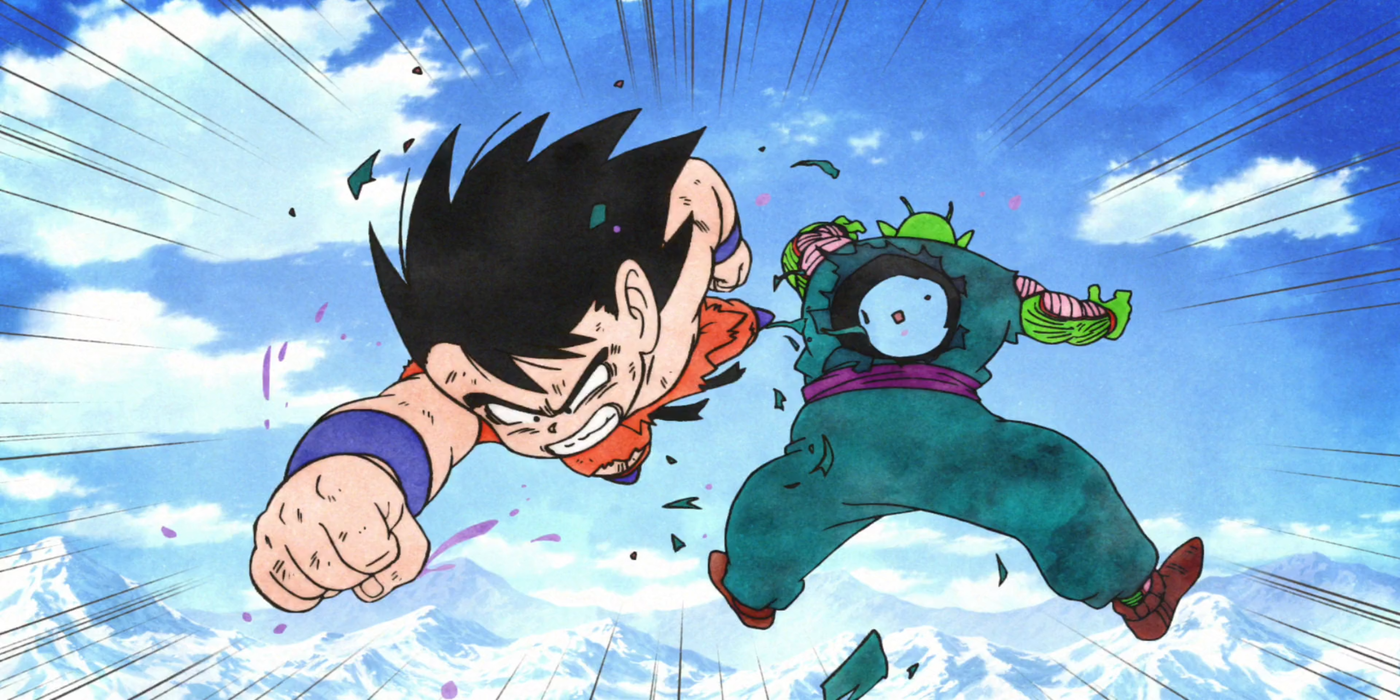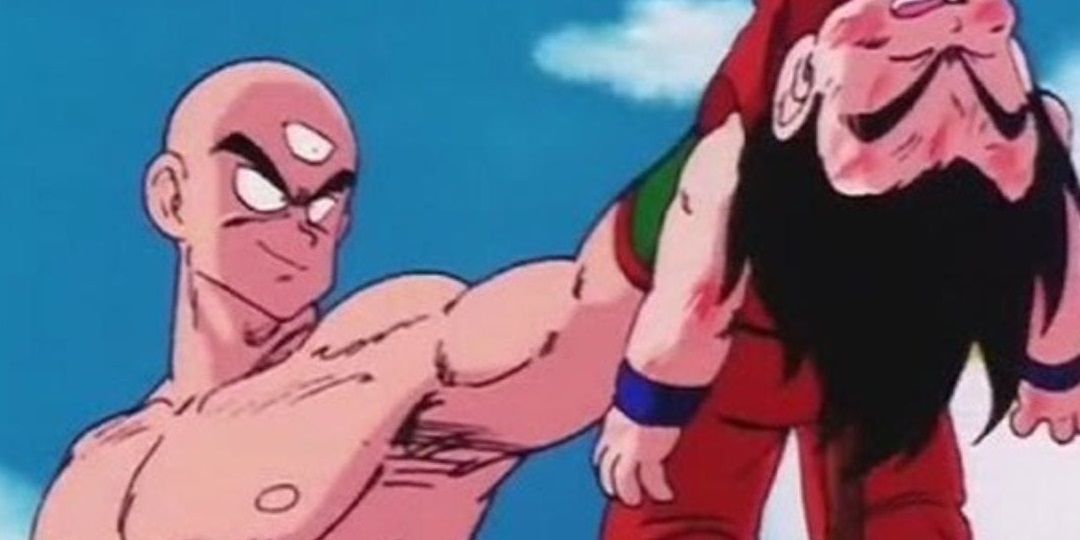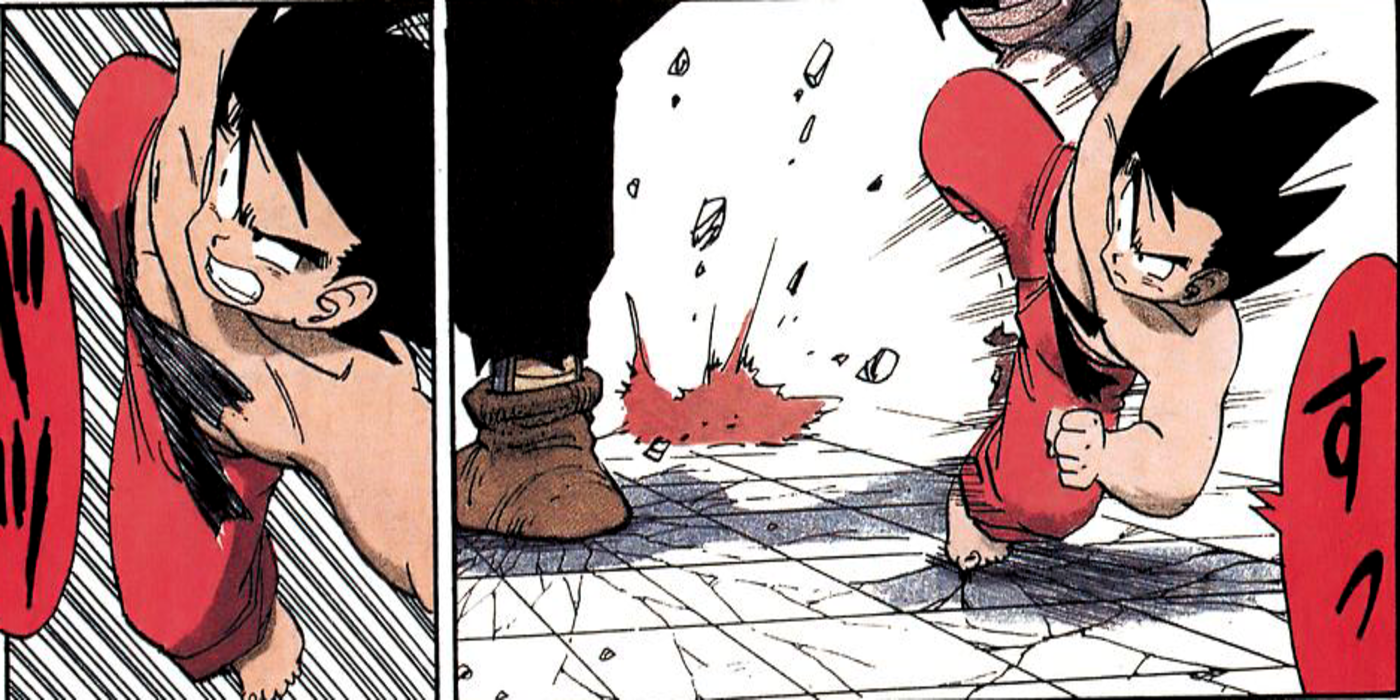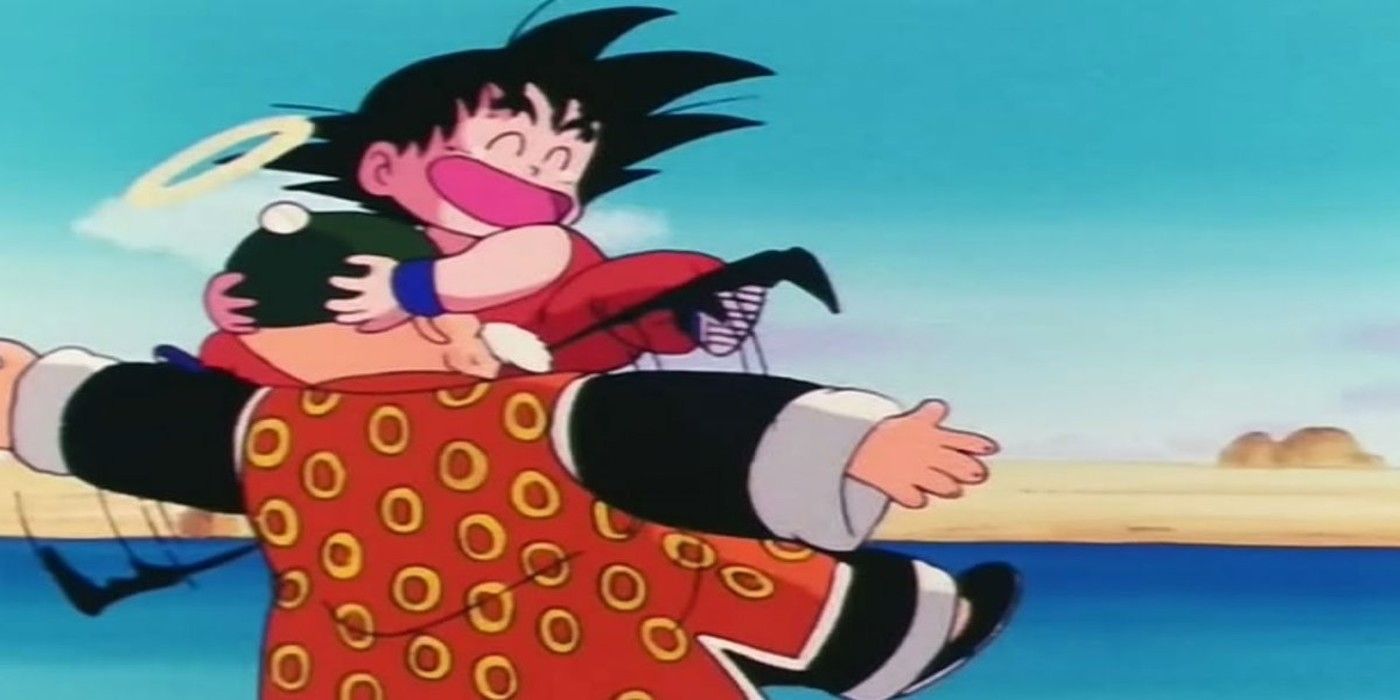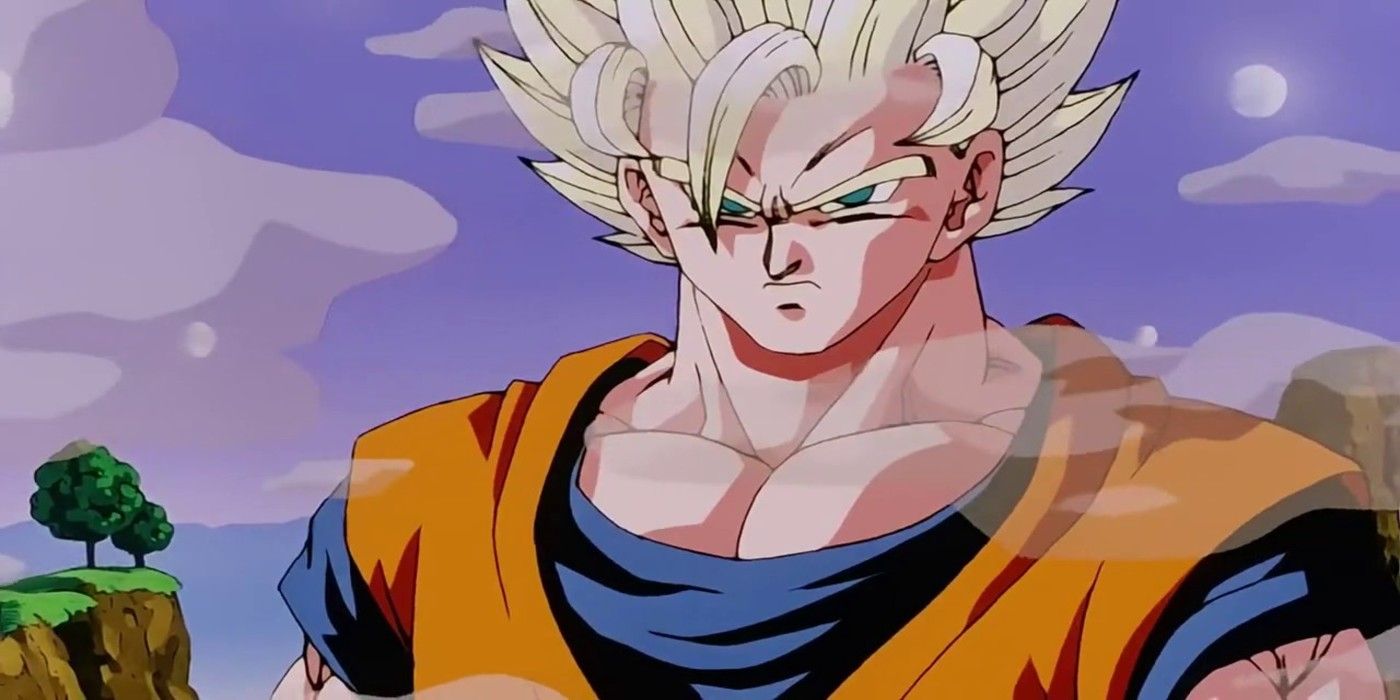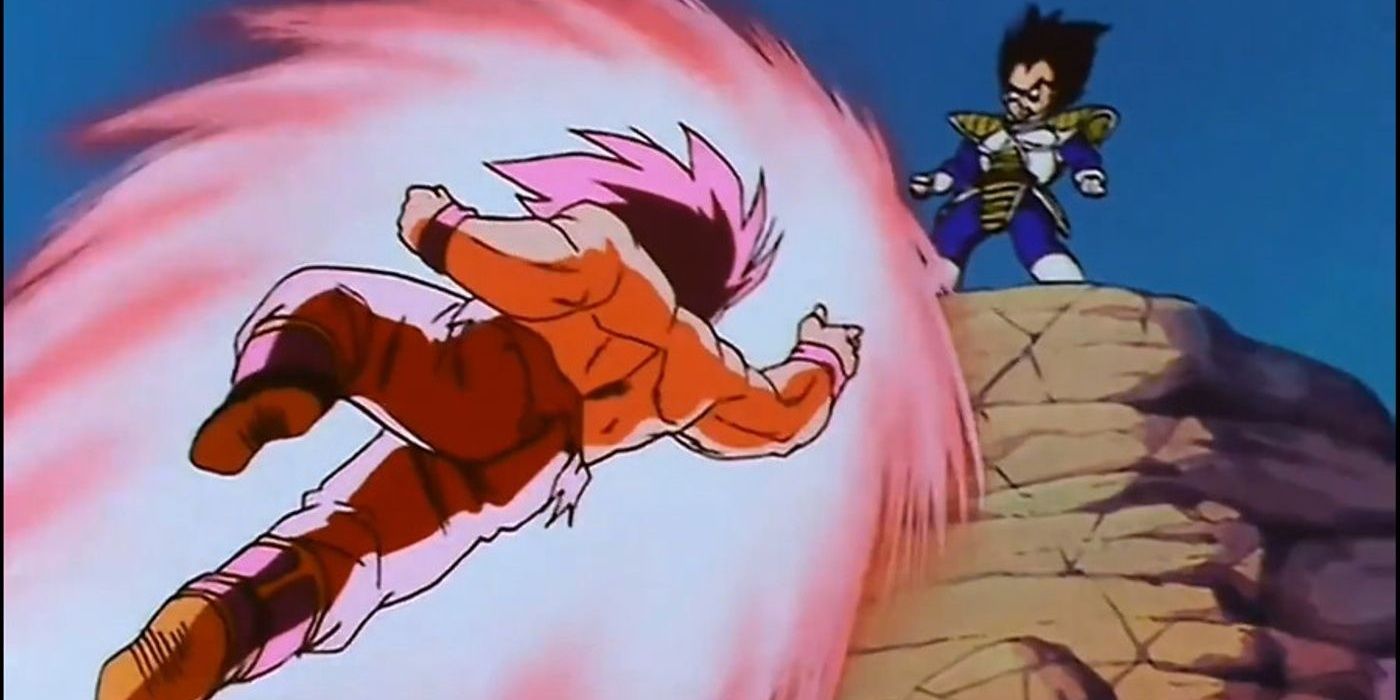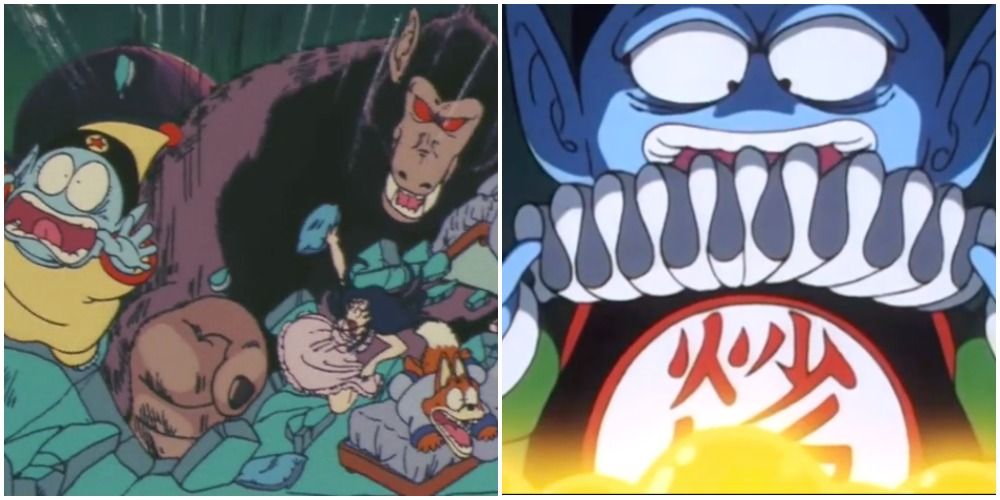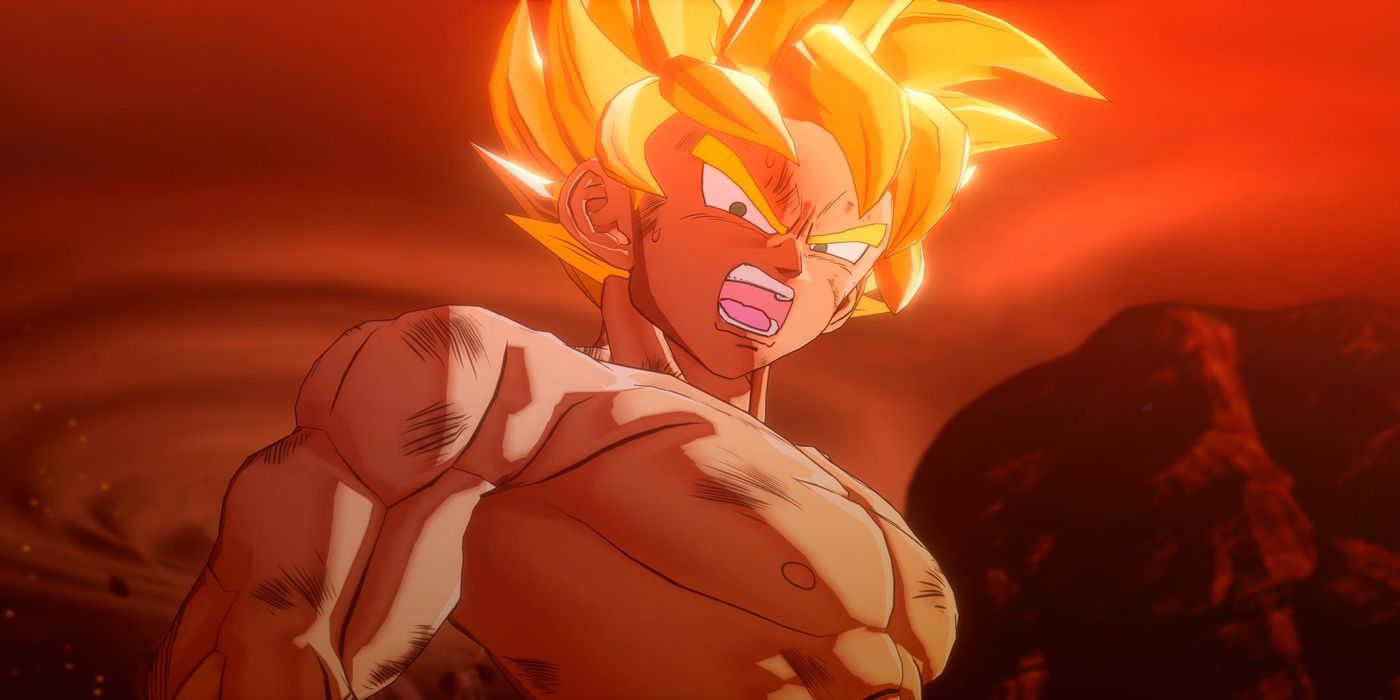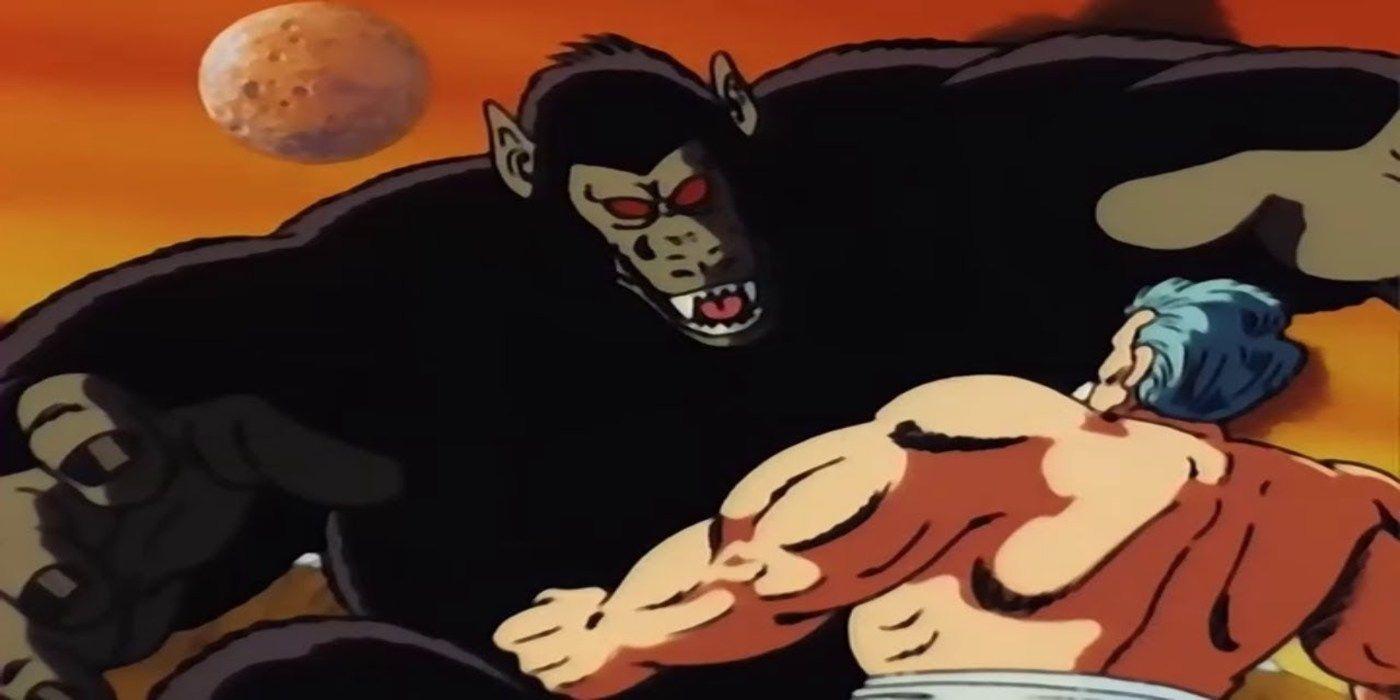If there’s one moment any Dragon Ball fan can comfortably and consistently look forward to, it’s the end of an arc. Even at its worst, Dragon Ball always knew how to end a story arc, building up to climactic battles set against now iconic backdrops. From the very first story arc all the way to the last, Dragon Ball made it a habit of ending on a high.
At the same time, some settings just don’t match the tone or intensity of their final battle. Akira Toriyama’s slow adoption of empty landscapes for battles is one of Dragon Ball’s worst crutches as a manga. Especially since the series does make use of some fairly inspired settings every now & then.
10 Cell Games Battlefield (Cell)
The tragedy of the Cell Games finale is that it actually opens with a great setting. The Cell Games arena is very much in the spirit of the Tenkaichi Budokai, and the ornate decorations are a nice way of showing Cell’s superficial respect for the format. Unfortunately, while it makes sense for Cell to destroy the arena, it results in the rest of the arc playing out on an empty battlefield.
Of Toriyama’s wastelands, this is by far the worst. Gohan deserved to step foot on that arena, and Goku deserved a proper tournament match for his swansong. Still, the fights against Cell are great and the Cell Games arena is a treat while it’s intact.
9 King’s Castle (Demon King Piccolo)
Much like the Cell arc, the Demon King Piccolo arc kicks off its finale with a great setting. Goku saving Tenshinhan in sight of King’s Castle is a great set piece to end the arc on. Demon King Piccolo has genuinely succeeded in taking over the planet, and Goku’s battle takes him to the world’s capital.
Tragically, Piccolo wipes the area into a wasteland. If nothing else, this is reserved until much later in the fight. By the time the battlefield is destroyed, Goku’s battle is already starting to come to an end, with really only the finishing blow left.
8 Tournament Arena (22nd Tenkaichi Budokai)
The 22nd Tenkaichi Budokai marks the first time the final battle arena gets destroyed, but it’s saved until the very end of the fight– literally moments before it’s over– so it gets a pass. Really, the only thing holding the setting back is just how to the point it is. Besides Tenshinhan destroying the arena, Toriyama doesn’t do much to set a mood.
Akira Toriyama doesn’t need to, though, as the 22nd Tenkaichi Budokai is home to some of the best fight choreography in the series. Goku and Tenshinhan’s match is an epic fight that’s carried by excellent choreography and some great development for Ten. If nothing else, ending the battle above the arena with Goku attempting one last gambit is memorable.
7 Destroyed Tournament Arena (23rd Tenkaichi Budokai)
Much like Demon King Piccolo before him, Majunior wipes the 23rd Tenkaichi Budokai arena to a wasteland. To the fight’s credit, most of it is actually spent in the arena with Goku making an active effort to play by tournament rules. It’s only when the battle starts to wind down that the arena is destroyed completely.
The setting itself is visually bland, but it’s elevated by its context. Piccolo has destroyed the arena, but Goku hasn’t removed it from the equation. Goku never leaves the tournament’s designated arena, fighting where the arena once was. Knowing this makes rereading & rewatching the battle even more of a treat.
6 Uranai Baba’s Palace (Red Ribbon Army)
Uranai Baba’s Palace has two key settings where battles take place: the Devil’s Toilet and her proper arena. The Devil’s Toilet is a narrow arena situated above a pool of acid whereas the arena is a round version of the Tenkaichi Budokai stage, albeit surrounded by water and in front of the temple.
Grandpa Gohan suggesting he and Goku fight outside instead of inside the Devil’s Toilet is ultimately for the best. There’s a very mystical quality to Uranai Baba, and that translates to her palace. It’s an appropriate setting for Goku and his grandfather to reunite after so long.
5 Kaioshin’s Realm (Majin Buu)
Kaioshin’s Realm is Dragon Ball’s signature wasteland given a divine coat of paint, and… it works. By the end of the Majin Buu arc, the stakes have escalated to outright divine proportions. Goku is fighting a mythical being in the home of the universe’s highest beings. It’s a fantastic set piece for Goku’s final battle.
Visually, the multiple moons and endless hills lend to the planet’s scope. The anime in particular finds a great color scheme for Kaioshin’s Realm, really selling the divine quality of the mystical homeworld. On a structural level, it really is no different than every wasteland that Dragon Ball started ending every arc on, but the visuals are novel both for the series & the arc.
4 Wasteland (Saiyan)
The fight against Nappa and Vegeta actually begins in a nice field, filled with greenery. The passage of time is even conveyed as the fight against Nappa goes on. By the time Goku arrives, the sun is setting and the stage is set for the arc’s final battle. Or it would be, but Goku doesn’t want to put his friend’s bodies in danger.
Moving himself and Vegeta to a wasteland, the two fight against a blue sky against a clear sky. Toriyama has a lot of wasteland arenas, but this is one of the best. The landscape is unique, it’s used as a means for Goku to hide & strategize against Oozaru Vegeta, and the fight it’s night by the time Bulma & co. find Goku lends to the dramatic exhaustion that’s built during the fight with Vegeta.
3 Pilaf’s Palace (Hunt For The Dragon Balls)
Oolong may have prevented Pilaf from making his wish, but come sunrise, the entire main cast will be fried to death. Amidst a starry sky and a full moon night, Goku reveals that his grandfather was crushed by a monster who only comes out on a full moon… before gazing up at the full moon and becoming said monster.
Goku’s midnight rampage is fantastic and one of Dragon Ball’s most iconic moments. Watching an Oozaru Goku destroy Pilaf’s palace while backdropped by the full moon is a climactic note to end the arc on. Goku’s rampage even ends up putting Bulma in danger, spurring Yamcha to confront his fear of women and subdue Goku.
2 A Dying Namek (Frieza)
Namek on a whole is a visually underwhelming setting. So much time is spent on what is essentially a planet designed for battles. There’s little to glean in regards to Namekian culture, but at least the planet is visually distinct in its geography and color palette. More importantly, while the setting itself is lackluster, Frieza shakes things up considerably for the last act.
Goku and Frieza’s fight amidst a dying Namek is one of Dragon Ball’s strongest set pieces. Goku puts Frieza in his place as pure destruction closes in on the fighters. Although he doesn’t die, seeing a lone Goku look upon Namek at the cusp of death is a haunting image and a perfect representation of all the damage Frieza has done in his lifetime.
1 Tournament Arena At Sundown (21st Tenkaichi Budokai)
In the manga, the 21st Tenkaichi Budokai– like every tournament– takes place over the course of a single day. By the final match, the sun has begun to set and Goku & Jackie Chun trade blows amidst a pink sky. It’s a visually stunning set piece for their final battle, and the amount of detail Toriyama puts into the arena & its surroundings is impressive.
There’s a simplicity to the 21st Tenkaichi Budokai, in general, which Dragon Ball ends up losing. The series is still ironing its kinks out, but Dragon Ball rarely ever ends an arc as elegantly again. Goku and Jackie Chun’s sundown showdown is one of the series’ finest moments.

